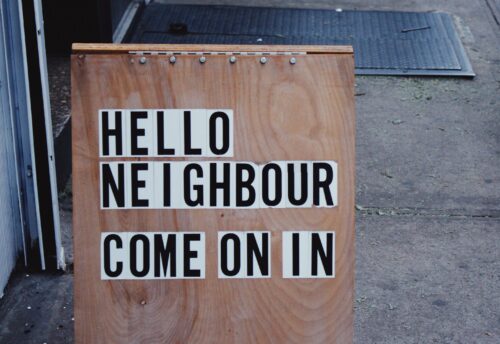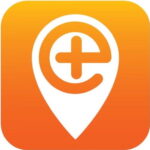Prepare your Household for any Disaster
Natural disasters impact thousands of Australians every year.
The best way to protect you and your family is to have a good plan. Being prepared can save lives, save money and can speed up recovery.
The following information provides advice on being prepared.
STEP 1: Know Your Risk
Depending on where you live, there may be some risks like bushfires or severe storms.
Remember, flash flooding and storm damage can occur almost anywhere.
Consider also the possible resulting effects of a disaster such as extended power outages, disruption to transport services and the potential for your home and/or community to become isolated for a period of time.
Think about where you might go if you weren’t able to go home, or had to leave home because of a disaster.
Click here for NSW government information on preparing for disasters.
To get information about an emergency or a disaster (before, after or during):
ABC Radio is the national emergency broadcaster and their local channel is ABC 94.5 FM
Listen live to local ABC online
Go to Tweed Council Emergency Dashboard
Go to Caldera Community Emergency Support FB Page
Emergency Alert phone number
With so many scams about, we often block numbers we don’t recognise but make sure you do not block the number +61 444 444 444.
This is the Emergency Alert phone number, a one-way SMS and voicemail service the Australian government developed following the Black Saturday Fires from 2009.
STEP 2: Make a Plan
Emergency Plans
Plan now for what to do in an emergency.
Preparing a Household Emergency Plan helps to keep everyone in your home informed of what to do in the event of an emergency.
Being prepared in advance can help to alleviate anxiety about potential disasters, and make emergencies less stressful and save precious time.
The Australian Red Cross has produced REDiPlan, which contains a template for creating your Household Emergency Plan, for your family and pets, and also for your business and employees.
Download the Red Cross’ ‘REDiPlan Guide’
Emergency Plan preparedness resources are also available for older people, people with a disability and in a range of accessible formats.
Go to the Red Cross’ Disaster Resources’ page
The NSW SES has also developed an online Home Emergency Plan, which is an interactive tool households can use to plan for floods, storms and tsunami.
The plan asks simple questions about where you live and who you may be responsible for.
Based on your responses, action lists of what can be done now, just before, during and after floods, storms and tsunami are created.
The Home Emergency Plan then offers you an editable version you can save onto your own computer. This version can be edited to suit your situation, family, household and responsibilities.
This means you can:
- Create check lists
- Order actions in terms of priority
- Create separate plans for different hazards
- Include other hazards in this plan (bushfire, earthquake, etc.)
- Develop specific plans for other members of your family (children, elderly, people living with a disability)
Go to the SES’ Emergency Plan page now to complete your plan online. Note: you’ll need to download the Word document version and edit this plan so it is relevant to your household needs.
Click to access the SES’ Emergency Plan Step-by-Step Guide
The Australian Red Cross has some useful checklists on what to pack
Click to download the ‘Get Prepared’ Checklist
Download the Emergency Plus App onto your phone today so you can tell emergency services your exact location when you need help (even if you are unsure exactly where you are).
The app uses technology from ‘what3words‘, and emergency services in Australia accept and use what3words addresses to find Triple Zero (000) callers faster.
What is what3words?
what3words within the Emergency Plus App is the easiest way to tell Triple Zero (000) exactly where you need help.
It has divided the world into 3 metre squares and given each one a unique three word identifier. So if you click on the app and see where you’re located, it will give three words to tell the operator, such as biscuit.helping.pioneer, and they will be able to locate you within 3 square metres.
Great in a crisis where you may be flustered, or not 100% sure of your exact location.
Here’s how the what3words system works (45 second video):
STEP 3: Get an Emergency Kit
Put together an Emergency Kit with items you may need if you have to evacuate your home, or if you have to stay in your home when essential services have been cut off.
You can also make up a smaller bag to keep in your car or office.An emergency kit that is put in an easy-to-reach place which is known to all family members can prove invaluable in a disaster.
Consider splitting your Emergency Kit in two – one part with the things to take if you need to leave, and the other with the things that you would need to stay in your home.
Click to view the SES Emergency Kit advice
If you may have to evacuate, you should add the following to your Emergency Kit:
- Bottled water (enough on hand for three days for the entire household)
- Supplies of prescribed medications for at least 14 days (including prescriptions)
- Spare clothes and blankets
- Spare home and car keys
- Cash and credit cards
- Food and medications for your pets
- Non-perishable food for adults and infants
STEP 4: Connect with your Neighbours and Community Network
Getting to know your neighbours is an important part of preparing your household.

Neighbours can help each other in many ways and can include people in your street or community.
Don’t be caught out during an emergency – make time to get to know your neighbours and their needs before an emergency situation occurs.
Join your Neighbourhood Group if you haven’t already and connect with your neighbours.
Click to find your Neighbourhood Group
Do you live alone and feel vulnerable?
The Red Cross has a Telecross service that provides a daily phone call to vulnerable people to ensure they are OK and to have a chat.
Call the Australian Red Cross on 1300 885 698 to sign up for the service.
The Tweed Shire Council Emergency Dashboard also has links to apps
Click to go to the Tweed Shire Council Emergency Dashboard
Check out our disaster-specific pages for information about preparing for Bushfires, Floods, Landslips, Heatwaves and Storms.
Also take the time to check out the information and support links on the Health & Mental Health Page, BEFORE a crisis.
Download the Apps you need to be prepared for anything.
Stay informed and go to the useful Apps, Numbers & Links page to download relevant apps and bookmark links.
CALL 000 in an Emergency
For Flood or Storm help
phone SES on 132 500
For Loss of Power, fallen Powerlines contact essential energy on 132 080
